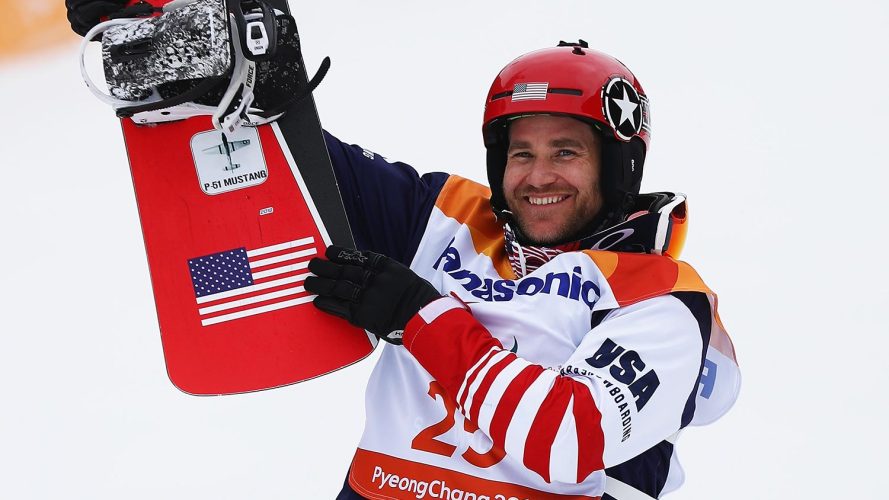This U.S. Paralympian Built a Prosthetics Business – Now His Competitors Are Customers, Too



U.S. Paralympic snowboarder Mike Schultz’s company makes high-performance prosthetics, which are used by many other Team USA Paralympians in Beijing.
Imagine you are living your dream as a champion snocross racer when, during a qualifying race, you suffer a devastating accident that results in the amputation of your left leg above the knee. If you are Mike Schultz, you end up competing seven months later at the X Games in adaptive motocross. Then you design a high-performance prosthetic that enables you to become a U.S. Paralympic medalist, and start a company that makes it possible for other adaptive athletes to do the same.
Schultz, 40, is a gold and silver medal-winning U.S. Paralympic snowboarder. He is competing again in Beijing for Team USA. He designed the specialized prosthetic he hopes will help return him to the medal podium. His company, BioDapt, makes high-performance lower limb prosthetic components that enable amputees to participate in high impact sports like snocross, motocross, and snowboarding. Many U.S. Paralympians at the Beijing Games will be competing with BioDapt devices designed by Schultz.
“What drives us is knowing we’re creating equipment that allows people to do things they previously couldn’t do,” said Schultz. “It’s such a rewarding feeling that we get to help somebody live a better life through the equipment we make.”
And what amazing equipment it is. Schultz and his team use performance data, direct engagement with customers, and Schultz’s own experience and expertise to design prosthetic knees and feet that can withstand impact, absorb shock, and flex in a way that makes amputees aware of their precise movements.
Turning data into insights: how activity data replaces trial and error
After the accident in 2008, Schultz was anxious to get back into sports, but struggled to find prosthetics to support extreme movement.
“But I’m a garage guy,” he said. “I love being in the shop, designing and creating things, and this was the perfect problem to try and solve. I went into the shop and tried to start building myself a better life so I could get back to doing what I love to do.”
The most important data-gathering tool he uses are video cameras that record movements from different angles and observe what’s happening with the components while engaged in different activities. They also use potentiometers, which are analog sensors that measure angular rotation and linear motion.
“This helped us read angles, speed shaft movements, and impacts like G-forces,” Schultz said. “We put all that into a graph so we could figure out how to tune the gear to get the best possible performance.”
Salesforce and Team USA
Whether on the snow or inside the rink, Team USA never fails to excite their fans. And now they’re using Salesforce’s Customer 360 to dial up the wow.n



Tuning the equipment, even the smallest bit, is crucial when fractions of second matter in competition. He said different activities require specific calibration for the knee and foot to account for angles, shock absorption, and other factors.
Designing for snowboarding, for example, requires knowing the angle flex of the knee while going through a corner. Data gathered through the video and sensors reveals the specific angles, which identifies areas where and when the prosthetic knee needs to be made stiffer for cornering.
“With this information, I can decide how to tune a shock internally, or make a change to the angler capacity of the knee system, or the ankle system or, for motocross, the footpeg system,” he said. “It’s all very customized and unique for each application.”
The big benefit, he said, is saving time and money. Because it can capture and record data based on real-world experience with the product, the company has less trial and error. By turning data into insights, BioDapt can be more efficient in its product development process. In the past, Schultz would experiment with something on the mountain without having stress-tested it in the lab. If it didn’t work out, he’d have to start over.
“The better data we can capture up front, the easier and more efficiently we can make positive changes in the designs,” he said.
Customer engagement — in the snow
BioDapt’s first customers were wounded veterans Schultz met at Walter Reed Medical Center, where he showed them what was possible. He connects with customers now mainly through Instagram and on the slopes, where he demonstrates how to snowboard using the prosthetic.
That level of direct, authentic communication builds a higher degree of trust with customers, and thus a greater likelihood of establishing a longstanding relationship.
Schultz’s products are critical in bridging the gap between what seems impossible and what is possible for amputees. Demonstrating those possibilities, he said, makes all the difference.
“I’ve never been a businessman, but I believed in what I had created, and I thought I could make a positive change for others,” he said. “Someone becomes an amputee, and they think their life is over and they can’t do this, or they can’t do that, until they see somebody out there doing it.”
In the meantime, he’s out there trailblazing in the prosthetics business, pumped up for Beijing, and looking forward to how other U.S. Paralympians will perform using his designs. He recalled a story from the 2018 Paralympic Games where an American teammate edged him out for the gold.
“I took the silver behind him on a leg that I built for him,” Schultz said. “It was kind of a bummer, but it helped me realize that I’m far more than just a gold medal-winning athlete. Obviously I want to be the best out there, but if I’m not, at least somebody wearing equipment I built is going to be.”
Salesforce and Team USA
Whether on the snow or inside the rink, Team USA never fails to excite their fans. And now they’re using Salesforce’s Customer 360 to dial up the wow.n












